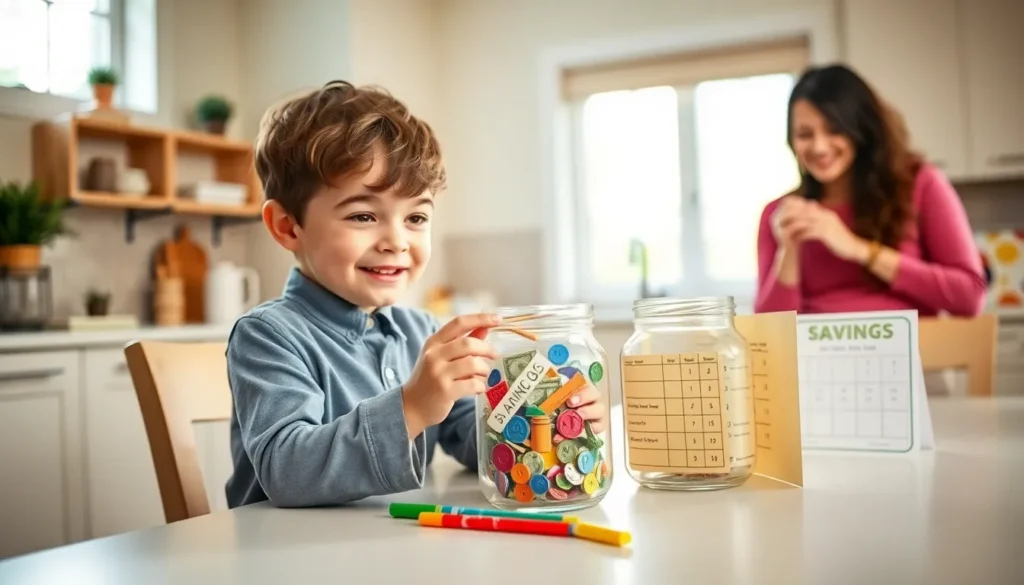Table of Contents
ToggleEvery parent wants the best for their children, and teaching them how to save money is a cornerstone of financial literacy. Imagine this: a child saving a few bucks today could lead to a financially savvy adult tomorrow. Saving money doesn’t need to be a dull chore, it can actually be an exciting adventure. By following these money saving tips for kids, parents can revolutionize the way their children view finances. Let’s jump into why saving is essential and how it can be made fun.
Understanding the Importance of Saving Money

Understanding the significance of saving money can create a strong foundation for children as they grow. Money isn’t just paper: it’s the ticket to future opportunities. When kids grasp the concept of saving, they are likely to develop a sense of responsibility and independence. This instills confidence in them while managing their finances.
Also, saving money helps children understand the value of hard work. It fosters discipline and encourages them to think ahead, making better choices about spending and saving. By teaching children about saving early on, they can learn to set aside money for things they want in the future, whether it’s a new video game or something larger like a bicycle. Essentially, saving becomes a way to achieve dreams, making it all the more rewarding.
Establishing a Savings Goal
Setting savings goals is a practical way to motivate children to save money. When kids know what they’re saving for, their motivation skyrockets. Start by helping them pick something they really want, a new toy, a special outing, or even a future trip. Aim for a goal that’s achievable yet encourages them to save diligently.
You can introduce the concept of short-term and long-term goals. For instance, saving for a toy might be a short-term goal taking a few weeks, while a bicycle could be a long-term objective over several months. Using a visual aid like a chart or a money jar can make this process tangible. Every time money is added, they can see their goal get closer. This builds excitement and encourages them to continue saving.
Practical Money Saving Tips
There are numerous practical strategies that can make saving money enjoyable for kids. Here are some fun and interactive ways to save:
Fun and Interactive Ways to Save
- Savings Jar: Setting up a colorful jar for savings provides a visual boost. Kids can decorate jars to make them unique and personal, further enhancing the experience.
- Reward System: Establish a rewards system for reaching savings goals. For instance, if they reach a specific amount, treat them to a small surprise.
- Leveraging Allowances: Encourage kids to allocate a portion of their allowance to savings. Setting expectations early on can help them develop a habit of saving.
Incorporating Money Management into Daily Life
- Games and Apps: Engage children with money management games and applications designed for kids. These can teach financial concepts in a playful manner.
- Real-Life Experiences: Take them shopping and discuss pricing, discounts, and budgeting. This turns everyday activity into a learning opportunity.
- Involving Them in Family Decisions: Give kids a small budget for planning a family outing, allowing them to handle real-money situations while having fun.
By making saving practical and engaging, kids learn essential financial skills that last a lifetime.
Teaching Kids About Budgeting
Budgeting isn’t just for adults: it’s a critical skill for kids too. Teaching young minds about budgeting can start early by introducing simple concepts. Begin by discussing needs versus wants. Make a list of necessities, like food and clothes, next to desires, such as toys or games.
Once they understand these differences, present budgeting as a way of prioritizing. Have them create a mini-budget using their allowance or birthday money. By dividing up their money into categories, savings, spending, and even sharing, they can visualize how to manage their finances. Many kids find excitement in seeing their budget come to life, and it can be a great opportunity for parents to engage and help them refine their skills.
Engaging Activities to Teach Kids Financial Literacy
There are a host of engaging activities that can cultivate financial literacy in kids. Think about incorporating real-life simulations, such as a mock store where kids can buy and sell items with play money. This brings the concepts of earning and spending to life.
You might also consider organizing a ‘money week’ at home, where each day focuses on a different aspect of money management, saving, spending, and sharing. As kids learn through play, they absorb the lessons more effectively.
Joining local classes or workshops about money management can also be beneficial. Many communities offer programs aimed at youth financial education. The exposure helps kids understand the principles in an enjoyable environment.




